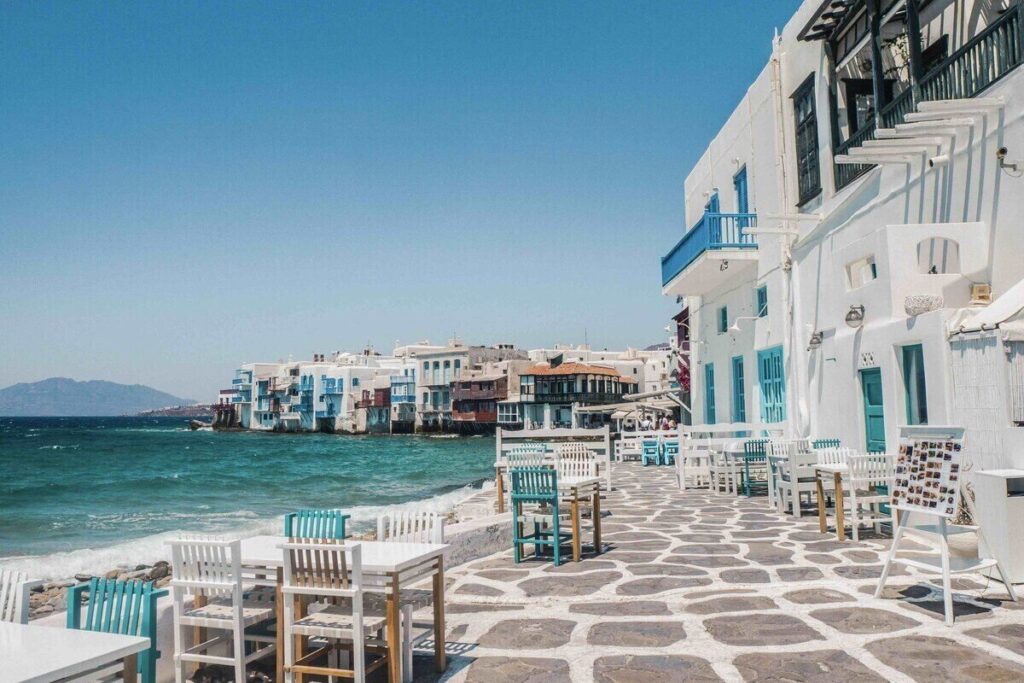Make your trip to Mykonos more sustainable by travelling in shoulder seasons like autumn instead and be rewarded with an experience of the real, wild side of the island.
I’m standing at a scrubbed wooden table grating cucumber for tzatziki with a view of a manicured vegetable plot and a soundtrack of bleating goats.
It’s probably not the image that typically comes to mind when you think about a holiday on the Greek island of Mykonos.
The Cycladic hotspot is renowned for its buzzing beach clubs of bacchanalian festivities and jam-packed, whitewashed town centres.
But many local residents and businesses in the hospitality industry want to change what tourism looks like on their island.
Make your trip to Mykonos more sustainable by travelling in shoulder seasons like autumn instead and be rewarded with an experience of the real, wild side of the island.
Mykonos: Swap beaches for a sacred archaeological site
Mykonos made headlines this summer for the soaring prices of sun loungers and other amenities on the island.
Inhabitants also began protesting against the inaccessibility of beaches that had been illegally closed off to the public by club owners.
Skip the beaches – clubs are mostly closed in October anyway – and head to the archaeological attraction that ironically brought the island tourism fame in the first place.
Delos island, accessible via a 30-minute ferry ride from Mykonos, is the mythological birthplace of the twin gods Apollo and Artemis and was a major sacred site in ancient Greek culture.
Visit the UNESCO site today and you’ll find a rocky isle crammed with the remains of luxurious homes and grand public buildings from when the island became a key trading port in the 2nd century BC.
You’ll find graceful statues, ornate temples and mosaic floors – and a large colony of cats.
Mykonos: Swap busy town centres for quiet villages
Mykonos old town (Chora) is pretty, but it has been whitewashed of all character and taken over by overpriced bars and luxury chain shops.
I decided to spend a day in the inland village of Ano Mera instead. Life here centres around a wide square with a handful of reasonably priced tavernas where it’s much easier to get a table in the sun.
In the afternoon, I visited the 16th-century monastery Panagia Tourliani with its elegant pale stone facade and ornate, arcaded belltower. Step inside and you find an interior rich with gilded icons and religious artefacts.
Mykonos: Swap sunbathing for a horse trek in the countryside
Many visitors to Mykonos stick to its famed coastline, but venture into the heart of the island and you’ll find wild mountainous landscapes and flora-filled walking paths.
I tried out horse trekking along these trails with IPPOS stables. For a couple of hours on a sunny September day, we meander gently along rocky, windswept paths lined with wildflowers and wild herbs.
The hilly landscape is carved into irregular fields by low drystone walls and we pass herds of goats and chicken coops.
Tiny ancient white churches crown hillocks and there is the occasional pigeon tower with decorative stonework.
There’s a big stone vat for crushed grapes underfoot and an outdoor wine cellar.
Rizes hosts cooking lessons using ingredients from their abundant vegetable plot. I made a fresh salad with peppers, onion and tomatoes and lamb meatballs with freshly picked oregano.
I ate my meal outside beneath a canopy of bougainvillaea without an overpriced cocktail or DJ booth in sight.
Source: Euro News


